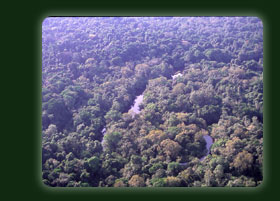Gabon 
Gabon is one of Africa's better-kept secrets. It is still covered in heavy jungle and by African standards is thinly populated with approximately 1.3 million people. Because it is rich in oil and minerals, it has one of the highest incomes per capita in Africa. Various Bantu tribes have always lived in the region, but from the 18th century the Fang from the north (Cameroon) have migrated extensively. They are the dominant section of the population. In the middle of the 19th century it became a French protectorate, which explains why French is the official language. Gabon became better known when, in 1913, Albert Schweitzer choose the village of Lambarene as the location for his hospital. Independence was declared in 1960.
Climate
In general it rains mainly at night. It has usually cleared by 8 am.
- January/February, short dry season: recommended for tourism, little rain, comfortable temperatures (22/25°C). The water level in the rivers is low and this does impede transport by pirogue (canoe).
- May, short rainy season: lots of rain and very warm (30°C), but nice light for photography.
- June/July/August, long dry season: little rain, very comfortable temperatures, but less sun than in the short dry season. Once again the water level in the rivers is low and this impedes transport by pirogue.
- November/December, long rainy season: lots of rain, high water in the rivers, very warm.
National parks
In 2002 thirteen areas in Gabon were officially declared nature reserves. Read about the national parks.
Money
The unit of currency is the CFA (Communauté Financielle Africaine) - a sort of African franc. 100 CFA always had a fixed value of 1 French franc - now 0.15 Euro. US dollars and Euros in cash are easy to exchange.
Safety
Compared to other African countries, Gabon is very safe.
Music
In the north of Gabon and in Cameroon Bikutsi music is popular. Têtes Brûlées from Cameroon performed Bikutsi in their own special way.


